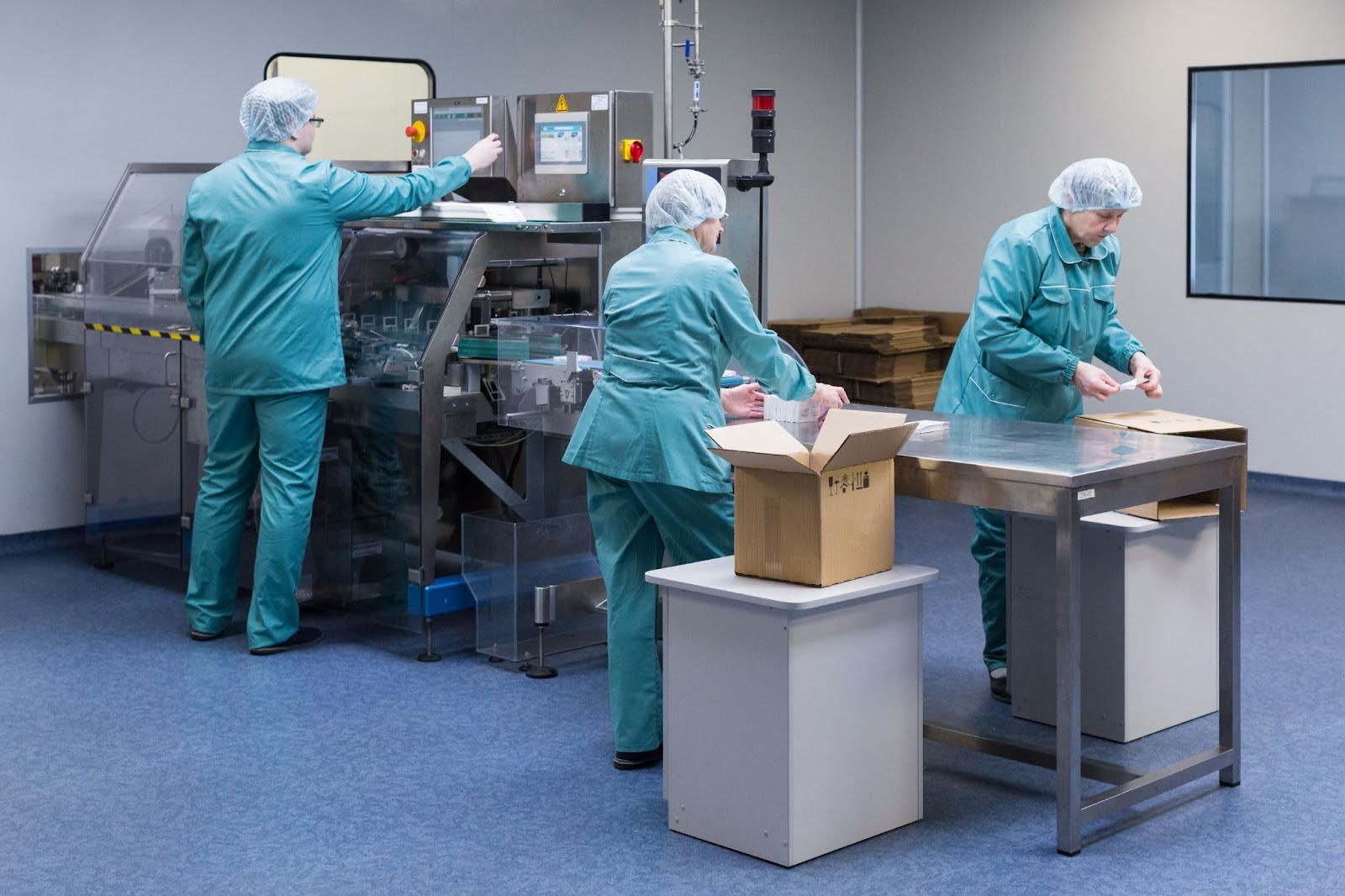by Mrudula Kulkarni
9 minutes
RABS vs Isolators – The CCS ROI Debate
RABS or Isolators? Uncover which barrier delivers better ROI and sterility assurance in aseptic pharma manufacturing.

Because sterility is not a cost — it’s a commitment.
A Tale of Two Barriers
Picture this.
You’re walking down the sterile corridor of a high-grade pharma facility — the hum of HEPA filters in the background, the hiss of airlocks sealing tight. Inside, operators stand behind thick glass panels, their gloved hands reaching through rigid sleeves. Some call it precision. Others call it protection.
Welcome to the ongoing debate that has quietly divided the aseptic manufacturing world — RABS versus Isolators.
Both claim to be the guardians of sterility assurance. Both promise to minimize contamination risk. Yet when it comes to ROI — Return on Investment, opinions diverge like two roads in a cleanroom.
So which one truly pays off — financially and operationally — in your Contamination Control Strategy (CCS)? Let’s break it down.
The Containment Spectrum
To understand this debate, imagine containment on a sliding scale.
At one end, you have RABS (Restricted Access Barrier Systems) — sophisticated enclosures designed to separate the operator from the aseptic core using rigid walls and glove ports, but still dependent on manual intervention.
At the other end lie Isolators — fully enclosed, decontaminated systems operating under positive pressure, creating an almost hermetic seal between humans and the sterile environment.
Both systems aim for the same goal: reduce human intervention, the biggest contamination source in aseptic processing.
But how they achieve that — and at what cost — is where the debate gets interesting.
The RABS Reality: Affordable Flexibility
RABS are often seen as the “middle path” — a practical compromise between open cleanroom operations and isolators. They offer faster installation, lower capital expenditure, and easier retrofitting into existing facilities.
According to an ISPE survey (2024), over 45% of facilities in Europe and Asia still rely on RABS as part of their aseptic strategy, citing agility and adaptability as key reasons.
Here’s a quick view:
But here’s the catch:
RABS depend heavily on operator behavior and procedural control. The moment human discipline slips — gowning errors, improper glove handling, or door openings — the entire sterility assurance collapses.
As one aseptic manufacturing head once told me,
“RABS work beautifully on paper. But in practice, they’re only as good as the people behind the glass.”
So, the ROI in RABS isn’t just financial — it’s behavioral. You save on upfront costs but spend more on training, monitoring, and procedural compliance.
The Isolator Ideal: The Fortress of Sterility
If RABS are pragmatic, Isolators are perfectionists.
They virtually eliminate operator intervention — creating a physical and microbiological barrier so robust that even human error struggles to sneak in.
Modern isolators use automated vapor-phase hydrogen peroxide (VPHP) systems for decontamination, maintaining Grade A conditions inside with Grade D surroundings outside. This leads to significant cost savings in facility maintenance — smaller cleanrooms, less gowning, lower HVAC energy consumption.
Yet, isolators demand precision in design, validation, and operation. Their capital cost is nearly 1.5–2 times that of RABS, and they require more specialized engineering and decon expertise.
But the ROI story doesn’t end there.
When You Think Long-Term
An isolator’s life-cycle cost often proves more favorable due to:
- Reduced contamination risk (fewer batch rejections)
- Lower environmental monitoring burden
- Less reliance on operator training
- Extended equipment lifespan
A 2023 PDA case study showed that facilities shifting from RABS to isolators observed a 30% reduction in deviation-related downtime and a 20% improvement in batch release timelines.
In other words — the higher upfront investment eventually pays for itself through operational stability and regulatory confidence.
The CCS Lens: Choosing What Fits
Now, let’s bring it back to the Contamination Control Strategy (CCS) — the framework that now defines modern aseptic operations under Annex 1.
The CCS approach doesn’t prescribe which system to choose. Instead, it asks:
“Can your chosen system consistently deliver the desired sterility assurance level?”
That’s the real ROI — not in rupees or dollars, but in reproducibility, regulatory peace of mind, and product quality.
So, whether you choose RABS or isolators, the CCS should articulate:
- Risk-based justification for the chosen system
- Validation data on airflow, pressure differentials, and interventions
- Integration with EM data trends and CAPA history
- Operator qualification and behavioral monitoring
Because even the most expensive isolator can fail if your contamination control strategy isn’t robust — and even the best RABS can perform flawlessly when culture and control align.
The ROI Equation: Numbers Meet Narrative
Let’s simplify the cost-benefit view:
These are hypothetical but industry-aligned estimates based on ISPE and PDA cost models (2023–24).
In short, RABS win the short sprint; isolators win the marathon.
Cultural ROI: People, Not Just Panels
Here’s a truth that numbers often miss: Culture is the invisible ROI.
If your operators treat aseptic discipline as a ritual, RABS can serve you well. But if your organization struggles with behavioral compliance, isolators act as a mechanical safety net.
As a plant head once quipped,
“Isolators don’t get tired, distracted, or careless. People do.”
That’s why many modern facilities adopt a hybrid model — RABS for certain fill-finish lines, isolators for high-potency or high-risk products. It’s not about choosing sides; it’s about choosing fit-for-purpose solutions.
Future Outlook: Smarter Barriers, Digital Oversight
The future is not RABS or isolators — it’s RABS and isolators with digital intelligence.
With real-time EM data, AI-based intervention tracking, and glove integrity sensors, the next generation of barrier systems will blend containment with cognition.
Expect to see:
- Predictive maintenance using sensor analytics
- Automated glove leak detection and alerts
- Digital twin simulations for airflow and contamination spread
- Integrated CCS dashboards connecting EM, deviation, and CAPA data
Because the ROI of tomorrow won’t just be in equipment — it’ll be in data-driven decision-making.
Expert Insight
As Dr. Meera Sinha, a sterility assurance consultant, often says:
“The debate isn’t about which barrier is better — it’s about which barrier fits your process maturity and people readiness. A good CCS isn’t equipment-led, it’s culture-led.”
Checklist: Choosing Between RABS and Isolators
Final Thoughts: ROI Beyond Rupees
At the end of the day, this debate isn’t about money — it’s about mindset.
RABS reward discipline. Isolators reward design.
Both demand a culture that treats sterility not as a checklist, but as a covenant.
So, whether you choose the “accessible agility” of RABS or the “airtight assurance” of isolators, make sure your CCS tells a story regulators can believe — one where science, safety, and ROI all align.
Because in aseptic manufacturing, the ultimate return isn’t financial —
it’s trust.
FAQs
1. What are the key differences between RABS and Isolators?
Restricted Access Barrier Systems (RABS) rely on physical barriers and controlled airflow to separate operators from the sterile zone, allowing limited access through glove ports. Isolators, on the other hand, offer a completely sealed system using positive or negative pressure differentials and integrated bio-decontamination, ensuring a higher level of contamination control.
2. Is switching from RABS to Isolators worth the investment?
That depends on your facility’s risk tolerance, batch size, and long-term sterility assurance strategy. While RABS are more cost-effective initially, Isolators deliver a stronger return on investment (ROI) through reduced contamination events, lower gowning and HVAC costs, and fewer human interventions over time.
3. How do regulatory bodies view RABS and Isolators?
Both technologies are accepted under GMP guidelines, but regulators such as the FDA and EMA emphasize the importance of risk-based justification. The trend is clear — facilities with Isolators often demonstrate higher compliance with Annex 1 expectations for closed processing and minimized operator exposure.
4. Can RABS and Isolators coexist within the same facility?
Absolutely. Many hybrid facilities employ RABS for flexible operations (e.g., small-scale or clinical batches) and Isolators for high-risk or high-volume production. The key lies in designing clear segregation, harmonized environmental monitoring (EM) protocols, and consistent operator training to prevent cross-contamination.
5. What’s the future of CCS (Contamination Control Strategy) in aseptic processing?
The future is undeniably digital and data-driven. Expect to see smart isolators integrated with AI-based EM analytics, automated glove leak detection, and predictive maintenance. The debate between RABS and Isolators will soon evolve into how well your CCS integrates with Industry 4.0 principles to make sterility assurance not just compliant — but intelligent.




